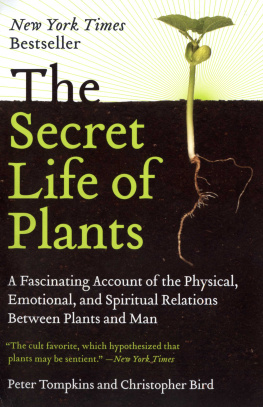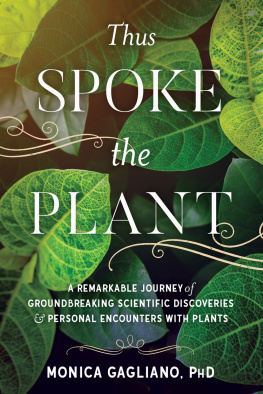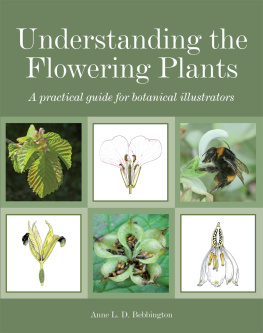The authors wish to express their gratitude to all who have helped them in the compilation of this book, which required extensive research in Europe, the Soviet Union, and the United States.
They are especially grateful to the staff of the U.S. Library of Congress and in particular to Legare H. B. Obear, Chief of the Loan Division, and to his most helpful assistants. In the Stack and Reader Division, they wish to thank Dudley B. Ball, Roland C. Maheux, William Sartain, Lloyd A. Pauls, and Benjamin Swinson, who saved them much anxiety by caring for their shelved books.
Thanks are also due to Robert V. Allen of the Slavic and Central European Division, and Dolores Moyano Martin, of the Latin American Division, Library of Congress, and to Lida L. Allen of the National Agricultural Library, Beltsville, Maryland.
Very special thanks are due to two Muscovite scientists, biophysicist Dr. Viktor Adamenko, well known for his research on bio-energetics, and Professor Sinikov, Director of Studies of the Timiryazev Academy of Agricultural Sciences, both of whom kindly and promptly replied to requests for data and references unavailable in the United States, as did M. Rostislav Donn, Commercial Counselor of the French Embassy in Moscow.
Lastly the authors are grateful to their respective helpmates, without whom the book would never have reached the printer.
Short of Aphrodite, there is nothing lovelier on this planet than a flower, nor more essential than a plant. The true matrix of human life is the greensward covering mother earth. Without green plants we would neither breathe nor eat. On the undersurface of every leaf a million movable lips are engaged in devouring carbon dioxide and expelling oxygen. All together, 25 million square miles of leaf surface are daily engaged in this miracle of photosynthesis, producing oxygen and food for man and beast.
Of the 375 billion tons of food we consume each year the bulk comes from plants, which synthesize it out of air and soil with the help of sunlight. The remainder comes from animal products, which in turn are derived from plants. All the food, drink, intoxicants, drugs and medicines that keep man alive and, if properly used, radiantly healthy are ours through the sweetness of photosynthesis. Sugar produces all our starches, fats, oils, waxes, cellulose. From crib to coffin, man relies on cellulose as the basis for his shelter, clothing, fuel, fibers, basketry, cordage, musical instruments, and the paper on which he scribbles his philosophy. The abundance of plants profitably used by man is indicated by nearly six hundred pages in Uphofs Dictionary of Economic Plants. Agricultureas the economists agreeis the basis for a nations wealth.
Instinctively aware of the aesthetic vibrations of plants, which are spiritually satisfying, human beings are happiest and most comfortable when living with flora. At birth, marriage, death, blossoms are prerequisites, as they are at mealtime or festivities. We give plants and flowers as tokens of love, of friendship, or homage, and of thanks for hospitality. Our houses are adorned with gardens, our cities with parks, our nations with national preserves. The first thing a woman does to make a room livable is to place a plant in it or a vase of fresh cut flowers. Most men, if pressed, might describe paradise, whether in heaven or on earth, as a garden filled with luxuriant orchids, uncut, frequented by a nymph or two.
Aristotles dogma that plants have souls but no sensation lasted through the Middle Ages and into the eighteenth century, when Carl von Linn, grandfather of modern botany, declared that plants differ from animals and humans only in their lack of movement, a conceit which was shot down by the great nineteenth-century botanist Charles Darwin, who proved that every tendril has its power of independent movement. As Darwin put it, plants acquire and display this power only when it is of some advantage to them.
At the beginning of the twentieth century a gifted Viennese biologist with the Gallic name of Raoul Franc put forth the idea, shocking to contemporary natural philosophers, that plants move their bodies as freely, easily, and gracefully as the most skilled animal or human, and that the only reason we dont appreciate the fact is that plants do so at a much slower pace than humans.
The roots of plants, said Franc, burrow inquiringly into the earth, the buds and twigs swing in definite circles, the leaves and blossoms bend and shiver with change, the tendrils circle questingly and reach out with ghostly arms to feel their surroundings. Man, said Franc, merely thinks plants motionless and feelingless because he will not take the time to watch them.
Poets and philosophers such as Johann Wolfgang von Goethe and Rudolf Steiner, who took the trouble to watch plants, discovered that they grow in opposite directions, partly burrowing into the ground as if attracted by gravity, partly shooting up into the air as if pulled by some form of antigravity, or levity.
Wormlike rootlets, which Darwin likened to a brain, burrow constantly downward with thin white threads, crowding themselves firmly into the soil, tasting it as they go. Small hollow chambers in which a ball of starch can rattle indicate to the root tips the direction of the pull of gravity.
When the earth is dry, the roots turn toward moister ground, finding their way into buried pipes, stretching, as in the case of the lowly alfalfa plant, as far as forty feet, developing an energy that can bore through concrete. No one has yet counted the roots of a tree, but a study of a single rye plant indicates a total of over 13 million rootlets with a combined length of 380 miles. On these rootlets of a rye plant are fine root hairs estimated to number some 14 billion with a total length of 6,600 miles, almost the distance from pole to pole.
As the special burrowing cells are worn out by contact with stones, pebbles, and large grains of sand, they are rapidly replaced, but when they reach a source of nourishment they die and are replaced by cells designed to dissolve mineral salts and collect the resulting elements. This basic nourishment is passed from cell to cell up through the plant, which constitutes a single unit of protoplasm, a watery or gelatinous substance considered the basis of physical life.
The root is thus a waterpump, with water acting as a universal solvent, raising elements from root to leaf, evaporating and falling back to earth to act once more as the medium for this chain of life. The leaves of an ordinary sunflower will transpire in a day as much water as a man perspires. On a hot day a single birch can absorb as much as four hundred quarts, exuding cooling moisture through its leaves.
No plant, says Franc, is without movement; all growth is a series of movements; plants are constantly preoccupied with bending, turning and quivering. He describes a summer day with thousands of polyplike arms reaching from a peaceful arbor, trembling, quivering in their eagerness for new support for the heavy stalk that grows behind them. When the tendril, which sweeps a full circle in sixty-seven minutes, finds a perch, within twenty seconds it starts to curve around the object, and within the hour has wound itself so firmly it is hard to tear away. The tendril then curls itself like a corkscrew and in so doing raises the vine to itself.
A climbing plant which needs a prop will creep toward the nearest support. Should this be shifted, the vine, within a few hours, will change its course into the new direction. Can the plant see the pole? Does it sense it in some unfathomed way? If a plant is growing between obstructions and cannot see a potential support it will unerringly grow toward a hidden support, avoiding the area where none exists.








